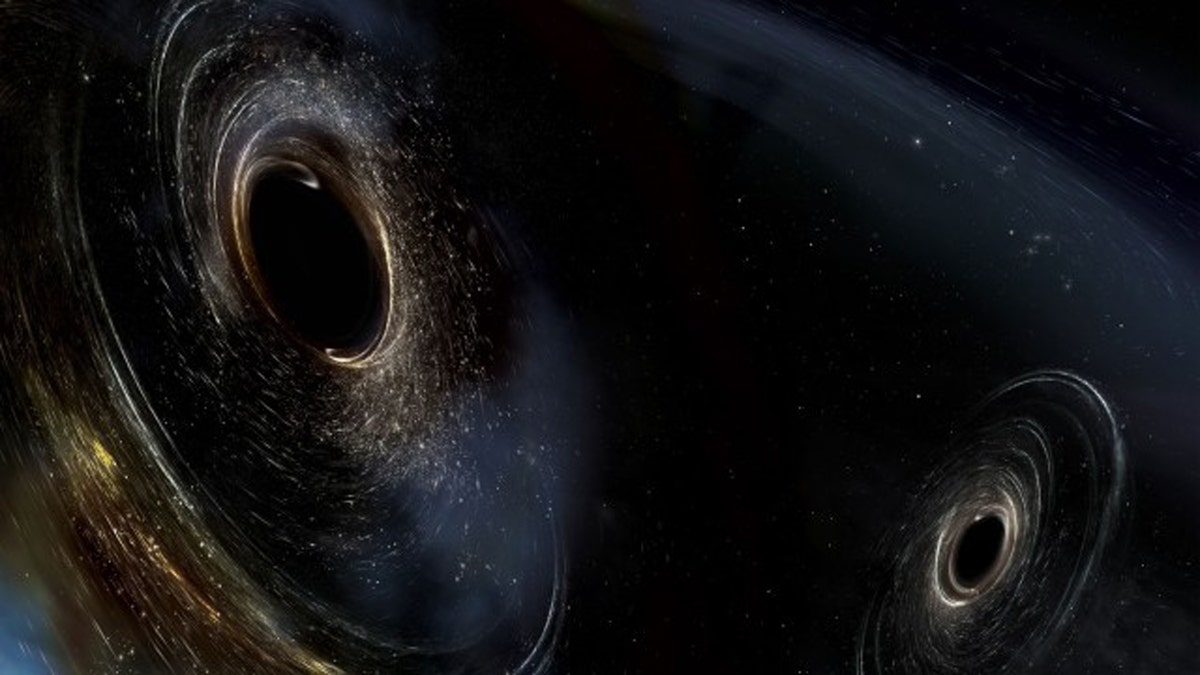
Artist's conception shows two merging black holes. (Credit: LIGO/Caltech/MIT/Sonoma State (AuroreSimonnet))
Black holes are out there making waves.
Four new gravitational wave detections were announced during a science conference over the weekend, bringing the total number of detections to 11 since the first monumental discovery in February 2016.
Of these detections, one is the most distant and most massive event to date – resulting from two black holes that collided roughly five billion years ago. This collision formed a new black hole 80 times more massive than the sun.
“It took science a century to confirm Einstein’s prediction of the existence of gravitational waves,” Sheila Rowan, a physicist at the University of Glasgow in the United Kingdom, said in a statement.“But the pace of our discoveries since then has been exhilarating and we’re anticipating many more exciting detections to come.”
Interestingly, the latest detections weren’t derived from new data. Both detection facilities — the Advanced Laser Interferometer Gravitational-Wave Observatory in the US and Advanced Virgo facility in Italy — have been switched off for upgrading since 2017. Rather, scientists pored back through data collected between November 2016 and August 2017.
But these four new discoveries are giving scientists just enough black hole data (10 detections have been black hole mergers, while one was a neutron star merger) to start drawing some conclusions about what black holes really are.
“We now have a sharper picture of both how frequently stellar mass binary black holes merge and what their masses are,” Chris Pankow, an astrophysicist at Northwestern University, said in a separate statement. “These measurements will further enable us to understand how the most massive stars of our Universe are born, live and die.”
The research is described by the LIGO Scientific Collaboration and the Virgo Collaboration in two papers (here and here.) The aLIGO detectors are scheduled to be turned back on in early 2019. Scientists hope that with the new upgrades they’ll be able to detect two black hole mergers a month.
This story originally appeared in the New York Post.
